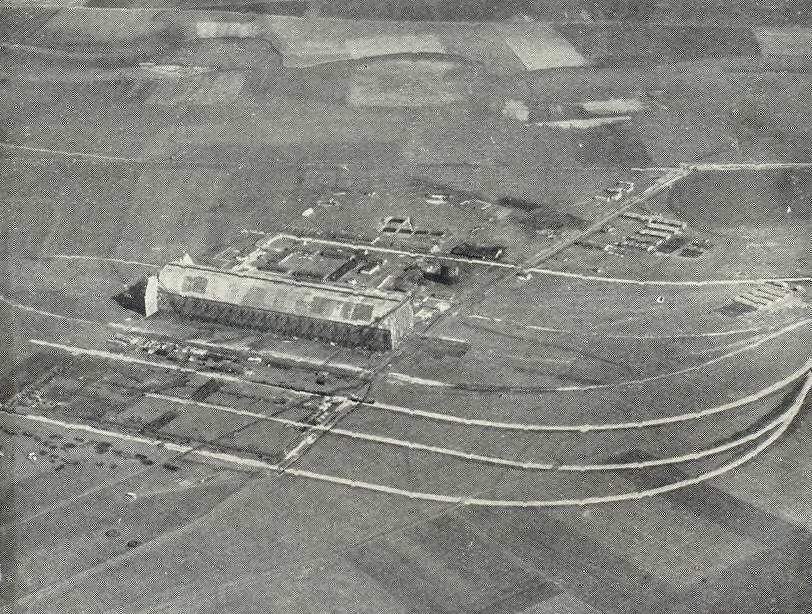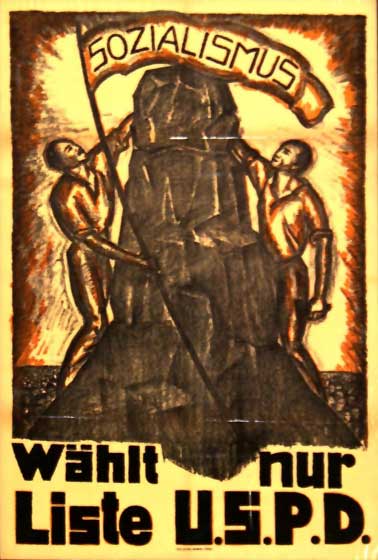|
Paul Merker
Paul Merker (1 February 1894, in Oberlößnitz – 13 May 1969, in Eichwalde) was an activist member of Germany's Communist Party (KPD / ''Kommunistische Partei Deutschlands'') who later became a politician and a top official of East Germany's ruling SED (Socialist Unity Party of Germany/''Sozialistische Einheitspartei Deutschlands''). Merker featured for several years in the show trial culture of the time, placed under a lengthy investigation process that formally began in 1950, and jailed for eight years as a spy in 1955. Released less than a year later, he appeared as a reluctant witness against his friend Walter Janka at another show trial in 1957. Biography Early years Paul Merker was born near Meissen in Kingdom of Saxony, in what was then the stand-alone municipality of Oberlößnitz on 1 February 1894. In 1934, however, Oberlößnitz was subsumed into Radebeul. Born into a Protestant family, after leaving school Merker worked as a waiter and as a hotel worker. He ... [...More Info...] [...Related Items...] OR: [Wikipedia] [Google] [Baidu] |
Radebeul
Radebeul ( hsb, Radobyle) is a town (''große Kreisstadt'') in the Elbe valley in the district of Meißen (district), Meißen in Saxony, Germany, a suburb of Dresden. It is well known for its viticulture, a museum dedicated to writer Karl May, and a narrow gauge railway connecting Radebeul with the castle of Moritzburg, Saxony, Moritzburg and the town of Radeburg. The Meißen area, where Radebeul is located, is one of the northeasternmost areas where wine is grown in the 21st century. It is sometimes called the "Nice of Saxony" for its pleasant landscape and mild climate. History A village Radebeul was first mentioned in 1349. In 1905 it absorbed the neighboring village of Serkowitz. On April 1, 1924 Radebeul became a town. Meanwhile, the neighboring village of Kötzschenbroda had taken over Lindenau in 1920, and Naundorf, Zitzschewig und Niederlößnitz by 1924, when it was made a town as well. In 1934 Wahnsdorf and Oberlößnitz joined Radebeul, and on January 1, 1935 ... [...More Info...] [...Related Items...] OR: [Wikipedia] [Google] [Baidu] |
Hamburg
(male), (female) en, Hamburger(s), Hamburgian(s) , timezone1 = Central (CET) , utc_offset1 = +1 , timezone1_DST = Central (CEST) , utc_offset1_DST = +2 , postal_code_type = Postal code(s) , postal_code = 20001–21149, 22001–22769 , area_code_type = Area code(s) , area_code = 040 , registration_plate = , blank_name_sec1 = GRP (nominal) , blank_info_sec1 = €123 billion (2019) , blank1_name_sec1 = GRP per capita , blank1_info_sec1 = €67,000 (2019) , blank1_name_sec2 = HDI (2018) , blank1_info_sec2 = 0.976 · 1st of 16 , iso_code = DE-HH , blank_name_sec2 = NUTS Region , blank_info_sec2 = DE6 , website = , footnotes ... [...More Info...] [...Related Items...] OR: [Wikipedia] [Google] [Baidu] |
Revolutionäre Gewerkschafts Opposition
The Revolutionäre Gewerkschafts Opposition (Revolutionary Union Opposition) was the Communist union in Germany during the Weimar Republic.Larry Dean Peterson''German Communism, Workers' Protest, and Labor Unions: the Politics of the United Front in Rhineland-Westphalia 1920-1924''International Institute of Social History, Amsterdam. Kluwer Academic Publishers (1993), p. 220. Retrieved August 9, 2011 It went underground after the Nazi Party seized control of the government and continued operating until it was crushed by the Nazis in 1935. Weimar era The Communist International (Comintern) and the Communist Party of Germany (KPD) had both wanted to create their own revolutionary unions and had attempted to use the Union of Manual and Intellectual Workers (UMIW), which had a high proportion of KPD members within its ranks, to that end. The KPD's relationship with the UMIW was strained by the lack of discipline within the Union and eventually, the relationship was ended.Eric D. W ... [...More Info...] [...Related Items...] OR: [Wikipedia] [Google] [Baidu] |
Politburo
A politburo () or political bureau is the executive committee for communist parties. It is present in most former and existing communist states. Names The term "politburo" in English comes from the Russian ''Politbyuro'' (), itself a contraction of ''Politicheskoye byuro'' (, "Political Bureau"). The Spanish term ''Politburó'' is directly loaned from Russian, as is the German ''Politbüro''. Chinese uses a calque (), from which the Vietnamese (), and Korean ( ''Jeongchiguk'') terms derive. History The first politburo was created in Russia by the Bolshevik Party in 1917 during the Russian Revolution that occurred during that year. The first Politburo had seven members: Lenin, Zinoviev, Kamenev, Trotsky, Stalin, Sokolnikov, and Bubnov. During the 20th century, politburos were established in most Communist states. They included the politburos of the USSR, East Germany, Afghanistan, and Czechoslovakia. Several countries still have a politburo system in operation: China, North K ... [...More Info...] [...Related Items...] OR: [Wikipedia] [Google] [Baidu] |
Landtag Of Prussia
The Landtag of Prussia (german: Preußischer Landtag) was the representative assembly of the Kingdom of Prussia implemented in 1849, a bicameral legislature consisting of the upper House of Lords (''Herrenhaus'') and the lower House of Representatives (''Abgeordnetenhaus''). After World War I and the German Revolution of 1918–19 the ''Landtag'' diet continued as the parliament of the Free State of Prussia between 1921 and 1934, when it was abolished by the Nazi regime. History Kingdom of Prussia In the course of the 1848 Revolution, King Frederick William IV of Prussia and his Minister Gottfried Ludolf Camphausen had agreed to call for the general election of a national assembly in all Prussian provinces. The Prussian National Assembly however was dismissed by royal decree of 5 December 1848 and the king imposed the Constitution of Prussia. The constitution, though reactionary, at least provided a bicameral parliament, consisting of a First Chamber (''Erste Kammer'', called ... [...More Info...] [...Related Items...] OR: [Wikipedia] [Google] [Baidu] |
Independent Social Democratic Party Of Germany
The Independent Social Democratic Party of Germany (german: Unabhängige Sozialdemokratische Partei Deutschlands, USPD) was a short-lived political party in Germany during the German Empire and the Weimar Republic. The organization was established in 1917 as the result of a split of anti-war members of the Social Democratic Party of Germany (SPD), from the left of the party as well as the centre and the right. The organization attempted to chart a course between electorally oriented reformism on the one hand and Bolshevist revolutionism on the other. The organization was terminated in 1931 through merger with the Socialist Workers' Party of Germany (SAPD). Organizational history Formation On 21 December 1915, several SPD members in the Reichstag, the German parliament, voted against the authorization of further credits to finance World War I, an incident that emphasized existing tensions between the party's leadership and the pacifists surrounding Hugo Haase and ultimately ... [...More Info...] [...Related Items...] OR: [Wikipedia] [Google] [Baidu] |
Bulgaria
Bulgaria (; bg, България, Bǎlgariya), officially the Republic of Bulgaria,, ) is a country in Southeast Europe. It is situated on the eastern flank of the Balkans, and is bordered by Romania to the north, Serbia and North Macedonia to the west, Greece and Turkey to the south, and the Black Sea to the east. Bulgaria covers a territory of , and is the sixteenth-largest country in Europe. Sofia is the nation's capital and largest city; other major cities are Plovdiv, Varna and Burgas. One of the earliest societies in the lands of modern-day Bulgaria was the Neolithic Karanovo culture, which dates back to 6,500 BC. In the 6th to 3rd century BC the region was a battleground for ancient Thracians, Persians, Celts and Macedonians; stability came when the Roman Empire conquered the region in AD 45. After the Roman state splintered, tribal invasions in the region resumed. Around the 6th century, these territories were settled by the early Slavs. The Bulgars, led by Asp ... [...More Info...] [...Related Items...] OR: [Wikipedia] [Google] [Baidu] |
Yambol
Yambol ( bg, Ямбол ) is a town in Southeastern Bulgaria and administrative centre of Yambol Province. It lies on both banks of the Tundzha river in the historical region of Thrace. It is occasionally spelled ''Jambol''. Yambol is the administrative center of two municipalities. One is Yambol Municipality, which covers the city itself, and the other is Tundzha Municipality, which covers the rural areas around Yambol. History The area surrounding Yambol has been inhabited since the Neolithic Era. The ancient Thracian royal city of Kabile or Kabyle ( bg, Кабиле), dating from the end of the 2nd millennium BCE, was located 10 km from current-day Yambol. It was one of Thracians' most important cities and contained one of the kings' palaces. The city was conquered by King Philip II of Macedon in 341 BCE and was re-established as an Ancient Greek ''polis''.An Inventory of Archaic and Classical Poleis: An Investigation Conducted by The Copenhagen Polis Centre for ... [...More Info...] [...Related Items...] OR: [Wikipedia] [Google] [Baidu] |
Luftstreitkräfte
The ''Deutsche Luftstreitkräfte'' (, German Air Force)—known before October 1916 as (Flyer Troops)—was the air arm of the Imperial German Army. In English-language sources it is usually referred to as the Imperial German Air Service, although that is not a literal translation of either name. German naval aviators of the were an integral part of the Imperial German Navy (). Both military branches operated aeroplanes, observation balloons and airships. Founding The Imperial German Army created an experimental balloon company inspired by the American balloon corps they had seen while observing the American Civil War, with varying forms of organisation from 1884 to 1901 until a Balloon Battalion was finally formed. The rapid development of aeronautics led to trials of airships and the choice of rigid types built by Zeppelin and Schutte-Lanz. The first military aircraft to be acquired by the German Army entered service in 1910 and the first five aviation battalions were est ... [...More Info...] [...Related Items...] OR: [Wikipedia] [Google] [Baidu] |
Sandhofen
Sandhofen is a northern borough ('' Stadtbezirk'') of Mannheim, Baden-Württemberg, Germany. The US Army is present in Sandhofen with Coleman Airfield Coleman Barracks/Coleman Army Airfield (ICAO: ETOR) is a United States Army military installation located in the Sandhofen district of Mannheim, Germany. It is assigned to U.S. Army, Europe ( USAREUR) and administered by the U.S. Army Installat ... and Coleman Barracks. The US Army's only military prison in Europe is located on that base. All US Army helicopter maintenance for Europe and the Middle East is performed at Coleman. References External links Official website(in German) Mannheim {{Mannheim-geo-stub ... [...More Info...] [...Related Items...] OR: [Wikipedia] [Google] [Baidu] |
Free Trade Unions (Germany)
The Free Trade Unions (German: ''Freie Gewerkschaften''; sometimes also translated as Free Labor Unions or Free Labour Unions) comprised the socialist trade union movement in Germany from 1890 to 1933. The term distinguished them from the liberal ("yellow") and Christian labor unions in Germany. Coordinated by the General Commission of German Trade Unions until 1919 and later by the General German Trade Union Federation, the Free Trade Unions consisted of forty-six individual labor organizations with a total of 2.5 million members as of 1914."Free Trade Unions (Freie Gewerkschaften)". In Campbell, Joan (ed.): ''European labor unions''. 1992, Greenwood Press, Westport, Connecticut The term "free" was to note that these unions were independent worker organizations. The liberal ("yellow") unions were considered to be controlled by management and the "Christian" trade unions by the Catholic Church. Later, the term "free trade unions" also indicated those that were not fronts for the C ... [...More Info...] [...Related Items...] OR: [Wikipedia] [Google] [Baidu] |






